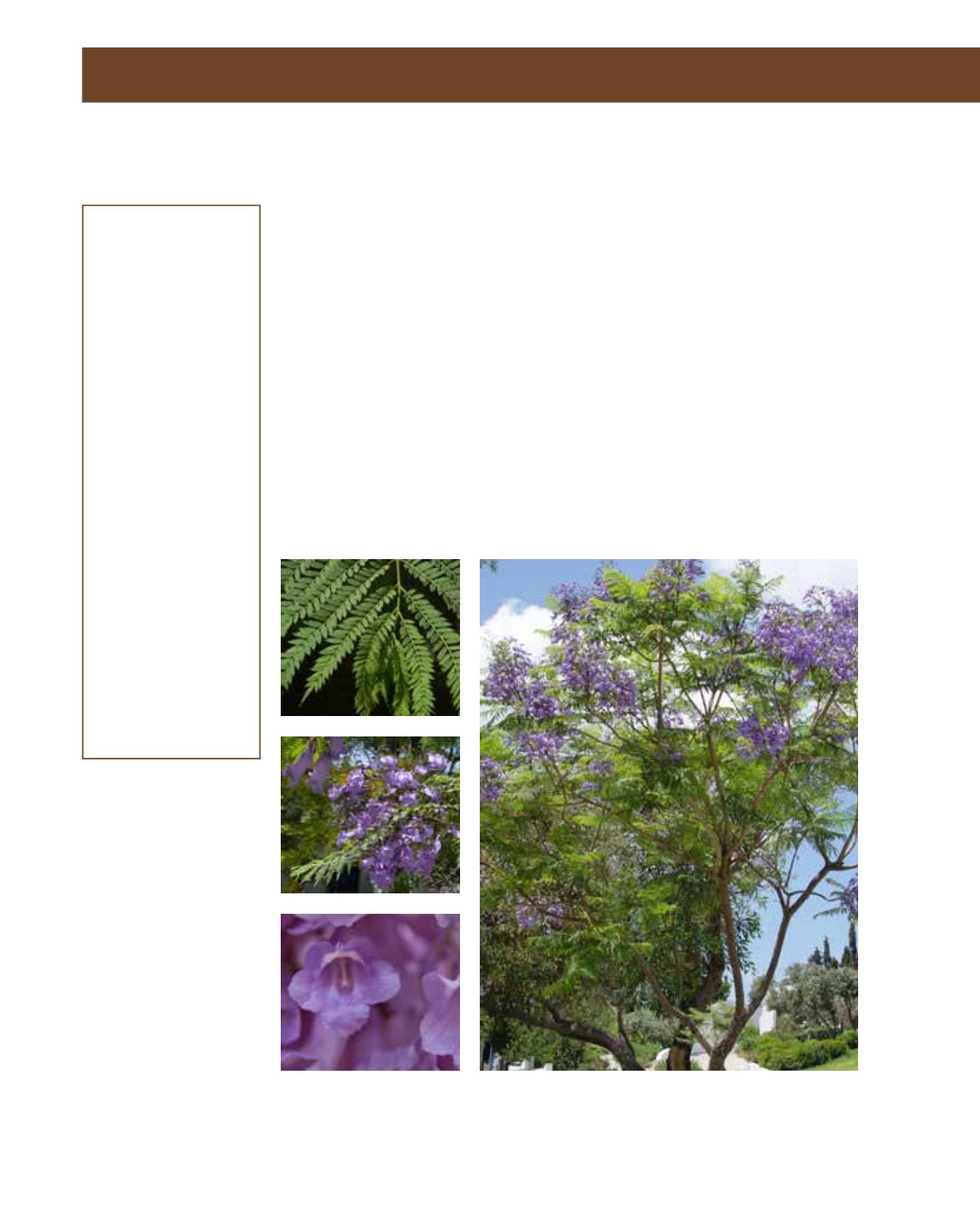

GENERAL
Origin
:
Mediterranean,
sub-tropical,
tropical
Vigour
:
fast growing
Humidity
:
semi-humid, very
humid
Propagation :
sowing and
pricking out
Maintenance :
moderate
CONDITIONS
Urban climate :
resistant
Dessication :
vulnerable
Stagnant water :
vulnerable
Irrigation
:
medium
Salinity/ppm :
low (600 ppm)
Hardiness
:
0°C
SHAPE
Type
:
tree
Height
:
10 m-20 m
Spread
:
8 m-10 m
Foliage
:
deciduous
FLOWER
Colour
:
light blue,
secondary: light
lilac
Size
:
15 cm - 20 cm
Period
:
March - May
FRUIT
Type of fruit :
capsule
Fruit size
:
5 cm - 6 cm
Toxicity
:
inedible
Native to tropical South America, this deciduous tree is an eye-catcher in full flower with large
panicles of lilac or pale blue. These appear in spring before the foliage fully forms. Flowers may
appear again in autumn, but less obviously, because of the dense bipinnate leaves. They resemble
those of some acacias – hence its species’ name mimosifolia – but may immediately be distingu-
ished for their opposite phyllotaxy. Jacaranda comes from the vernacular Brazilian name. They
grow fast to a height of about 10 metres and equivalent width in sunny positions when the soil
is fertile and frequently watered. The soil should contain compost and be fast-draining. Unfa-
vourable conditions such as compacted soil or continual drought will lead to dead branches. The
shallow-growing roots must not be damaged. Jacaranda is not often seen in Arriyadh; it is not
particularly well suited to the climate and its growth often comes to a standstill. In Arriyadh’s
coldest regions, the Jacaranda’s twigs may freeze, but trees soon recover just as if they had been
pruned. The tree can be cut back in late winter. Large, flat, red-brown fruits somehow resemble
ravioli and reveal seeds that easily germinate if watered for 24 hours before sowing. Jacarandas
may be grown in pots for their attractive fern-like leaves, but flowers will not appear on such
plants. Mature trees are flat-topped and their lacy foliage creates light summer shade. With sum-
mer humidity, they make specimens for pedestrian areas. In Arriyadh, unfortunately, they are
not very successful.
169
Jacaranda mimosifolia,
Bignoniaceae
Jacaranda,
Mimosa-Leaved Ebony
















